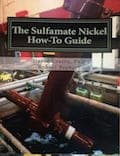
-----
White haze on parts after sulfamate nickel plating
May 11, 2022
Q. Hello, automatic PCB plater here with decorative chrome & aerospace plating background (all manual style or very rustic hoist) so automatic line is new to me. I'm currently having an issue that's really hurting us right now. We are plating small ceramic with copper bonded in layers with nickel gold -- with three port holes drilled out the middle that require masking.
My most successful plating process has come from a alkaline degreaser, citric activator, sulfuric acid dip, acidic gold strike, sulfuric acid dip, sulfamate nickel, gold strike, gold plate, rinse rinse rinse, hot DI rinse, blow dry.
The parts will come out with a white haze/film at random places on the rack when 50 parts are plated at a time. We have tried using different racks and masking styles; nothing makes a difference, some racks made condition worse. I've also tried alkaline degreaser, sulfuric acid dip, sulfamate nickel, gold strike, gold plate, etc.
For some reason if I send more than 10 parts 85% of the rack will blister after the nickel. But if I plate ten parts at a time they come out perfect no white haze. But when I add the strike before the nickel I get the haze even on ten parts.
Why would I have bond issues if I try plating more than 10 parts at a time?
Where is this mysterious white haze coming from? All of our chemistry is up to spec per our supplier and DI rinses are changed daily.
We do testing after plating to make sure no liquids leak during processing in our quality department and we have a 99% pass rate so we know nothing is leaking in or out during processing.
I know this is a lot to take in. Any advice is appreciated.
- Massachusetts, Charlton
A. Hi Matt. If you get successful plating without the gold strike before sulfamate nickel I would certainly eliminate it even if it had no relationship to the white haze -- no point in extraneous steps in an already complicated process.
As for the white haze and poor adhesion & blistering after the nickel, both seem like they could be related to the current density being too low when you are plating 50 parts, with consequent passivity and poor brightening. I think Hull Cell ⇦ huh? testing might reveal what is happening. Perhaps there is some choke point in the racks which is limiting your current density. Have you tested the nickel thickness to insure it actually plates just as fast and thick with 50 parts on the rack as with 10? I'm a "book knowledge" guy on this subject, so I hope someone with more hands-on experience will comment :-)
Luck & Regards,

Ted Mooney, P.E. RET
Striving to live Aloha
finishing.com - Pine Beach, New Jersey
Ted can be retained for immediate
answers or long term project help
May 2022
May 14, 2022
Q. A couple days after this post I noticed there was quite a bit of algae build up inside the tank walls and the anodes in our gold strike tank had that yellow film on it. So I took everything apart and replaced the old plumbing that was gunked up with the algae, carbon treated for 4 hours in a separate barrel while I scrubbed the algae and put the anodes in our gold stripper. I was able to run a 50 piece rack after and the white haze disappeared significantly except for one or two parts showing a very thin white haze that, of course, our amazing quality team picked up on.
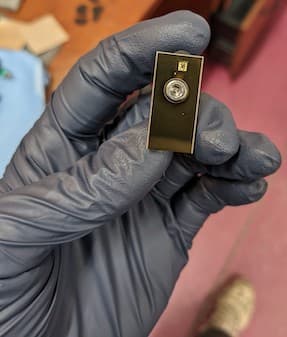
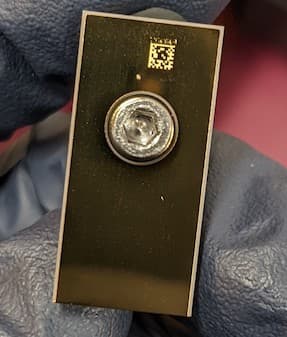
I will get the total surface area of each part individually and I already have the measurements for how much surface my rack takes up. Our nickel has an ASF of 25-30 at 130 °F with aggressive agitation we do not use brighteners in our tank. I only use wetter in the tank that is closely checked by Hull Cell testing done by yours truly. I do feel like we should be able to go straight from sulfuric acid dip to sulfamate nickel as well; being that the base is copper it shouldn't require any special activators and the surface is diamond turned prior to plating. I will get all of my surface calculations together and go for another 50 piece run without the gold strike as I would like to eliminate that out of the process as well to save us on processing time. It is strange that on my ten piece run at .3 amps @ 40min straight to Ni sulfamate no blisters but on a 1.6 amp @ 40 min run for 50 pcs I see extremely bad blistering. Both runs came to the desired thickness in the nickel.
parts with haze before etching

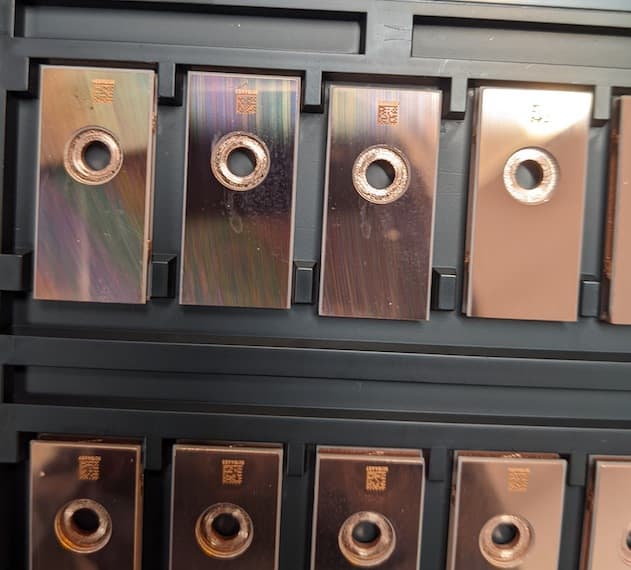
after etching with sodium persulphate
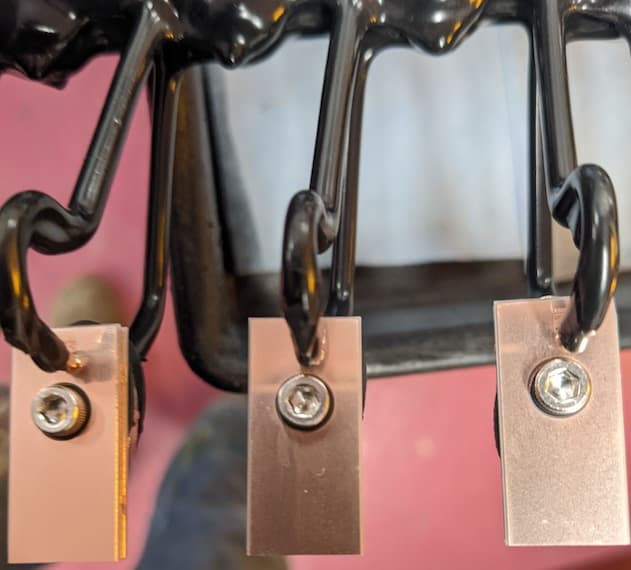

Shop employee - Massachusetts charlton
"when I add the strike before the nickel" -- What kind of strike before the nickel? Is it NiCl? If it is old and/or if you do not remove the anodes during down time, then the metal has increased and it is no longer a "strike", it is a normal plating solution capable of co-depositing impurities, (haze) in varying current density areas. Also, be sure the sulfuric "dip" does not drag on into the sulfamate. Also, as usual, Mooney's comments are right on, especially about lower c.d. on larger loads.

Robert H Probert
Robert H Probert Technical Services
Garner, North Carolina

May 16, 2022
Q. The strike is a slightly acidic gold strike. In theory you should be able to go straight from 5% sulfuric dip rinse rinse rinse to sulfamate but we were not achieving good bond without the gold strike prior to sulfamte Ni we don't not use any Wood's strike solutions as we only plate copper here, but might need it if we intend on using EN at some point. Also engineering has been doing some digging on our raw parts and noticed there is very similar imperfections on the piece that could be the white haze we see and the plating just magnifies it. So now they want us to use sodium persulphate to etch the surface to hide some of the imperfections before plating, not sure how much that will help as I'm not too familiar with said chemistry.
Matt Johndrow [returning]- Massachusetts charlton
May 17, 2022
Q, A, or Comment on THIS thread -or- Start a NEW Thread

